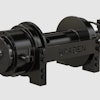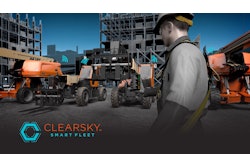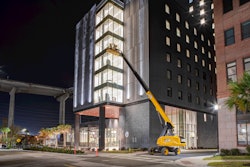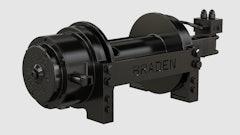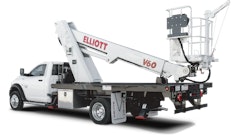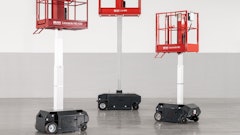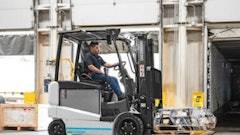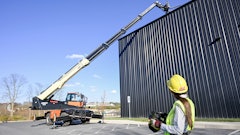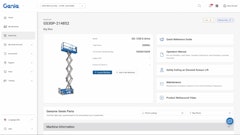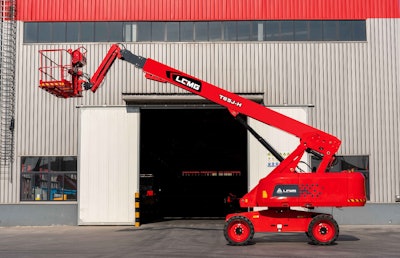
The lift equipment category is a pivotal segment within the equipment rental industry. The impact of this sector could very well be a strong indicator of the state of rental, but what's happening in construction in general.
Dickey Bennett, VP of Sales at LGMG speaks with Rental for his perspective on the current state of the lifting equipment industry.
Q. How do you see this year shaping up for the aerial market?
2025 has started off a bit soft, which isn’t surprising. We typically see some hesitation in the market whenever there’s a change in administration — companies pause, reassess, and wait to see how policies will shake out. That kind of caution is normal in an election transition year. However, the fundamentals of the MEWP market are still solid, and we expect activity to pick up as the year progresses and confidence returns.
Q. Why?
A big part of it is infrastructure spending — a lot of those federal dollars are finally flowing into actual projects. Combine that with a tight labor market and the continued shift toward safer, more efficient jobsite solutions, and MEWP equipment is in high demand. Contractors want gear that can boost productivity and keep crews safe. That’s where we come in.
While we’re not in a full-blown decline, I’d say any softening is mostly tied to interest rates and uncertainty. Some customers are being more cautious with fleet expansion, especially on the rental side. But again, it’s more of a recalibration than a downturn.
Q. How do you feel the presidency will impact the state of, or the future of, the aerial industry?
Presidential elections always bring a level of uncertainty, but the MEWP industry tends to respond more to policy than politics. If infrastructure investment continues — and both sides seem to support it — that’s good for our space. What we really watch is how those decisions translate into real project starts and funding.
Q. What are your general predictions for the aerial market for 2025? What factors are contributing to this?
I think 2025 is going to bring moderate growth. It won’t be explosive, but it’ll be healthy. Equipment replacement cycles, ongoing infrastructure work, and continued labor shortages will push demand for aerials that help do more with less. I also think we’ll see more focus on total cost of ownership, which plays to our strengths at LGMG NA.
Q. How can rental stores take advantage of these factors?
Rental companies should evaluate their fleet mix and ROI more than ever. That means choosing suppliers based on product quality, support, and cost-efficiency. With the right partners—like LGMG NA—they can grow smart, not just fast. In today’s competitive market, equipment becomes a smart investment when it’s easier to maintain, backed by a 5-year warranty on all MEWPs, and supported by consistent parts availability.
Q. Now that electric equipment has made a solid foundation in lifting machinery, what are the biggest opportunities for growth in rental?
Electric is definitely here to stay, and the biggest opportunity is capitalizing on indoor and low-emission jobsite demand. Urban projects, hospitals, airports — those customers are pushing for electric. Rental stores that invest in electric now are going to win long-term. And with battery tech improving, uptime concerns are becoming less of a barrier. Electric RT scissor lifts have really advanced in the last few years; some even offer similar weight capacities to diesel models. Because of this, a lot of contractors are now utilizing electric RT scissors throughout various building phases, as they can be used both indoors and outdoors. More contractors are also seeking machines that can handle heavy materials on both indoor and outdoor jobsites. This shift has driven the development of more versatile models that can stay on the job longer, reducing the need for multiple types of equipment.
Q. What topic(s) do you think will make the biggest/most impact in this industry? Why?
I’d say product support and uptime. Everyone talks about the iron, but in this environment, the real difference is made after the sale. Fast parts access, responsive tech support, and smart diagnostics — those are game changers. As machines get more advanced, support becomes the deciding factor for buyers and renters.
Q. What are the biggest changes at your company? How is LGMG adapting to 2025?
We’ve been focused on scaling up support, growing our parts distribution, and expanding our North American team. Our customers expect responsive, local service, and we’re investing to deliver that. We’ve also introduced several new models that reflect what the market is asking for: durable, easy-to-use, and cost-effective machines.
Q. What’s on the horizon for LGMG?
Growth. We’re gaining ground in North America, and the feedback has been strong. We continue investing in electric and lower-maintenance machines and bringing innovations to our boom and scissor lines. But beyond that, we strive to be a dependable extension of our customers’ teams—here when they need us and working together to move their business forward.

